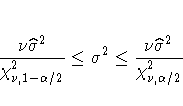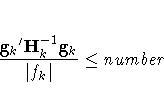Chapter Contents
Previous
Next
|
Chapter Contents |
Previous |
Next |
| The MIXED Procedure |






| Criteria | Larger-is-better | Smaller-is-better | Reference |
| AIC | l- d | -2l+ 2d | Akaike (1974) |
| HQIC | l- d loglogn | -2l+ 2d loglogn | Hannan and Quinn (1979) |
| BIC | l- d/2 logn | -2l+ d logn | Schwarz (1978) |
| CAIC | l- d(logn + 1)/2 | -2l+ d(logn + 1) | Bozdogan (1987) |
![[{X'\hat{R}}^{-1}X& {X'\hat{R}}^{-1}Z\*
{Z'\hat{R}}^{-1}X& {Z'\hat{R}}^{-1}
{Z + \hat{G}}^{-1}
] ,
[{X'\hat{R}}^{-1}y\ {Z'\hat{R}}^{-1}y
]](images/mixeq23.gif)
![[{X'\hat{R}}^{-1}X& {X'\hat{R}}^{-1}{Z \hat{G}}\*
{\hat{G} Z'\hat{R}}^{-1}X
& ...
...{Z \hat{G} +
\hat{G} }
] ,
[{X'\hat{R}}^{-1}y\ {\hat{G} Z'\hat{R}}^{-1}y
]](images/mixeq25.gif)
| Value of ORDER= | Levels Sorted By |
| DATA | order of appearance in the input data set |
| FORMATTED | external formatted value, except for numeric |
| variables with no explicit format, which are | |
| sorted by their unformatted (internal) value | |
| FREQ | descending frequency count; levels with the |
| most observations come first in the order | |
| INTERNAL | unformatted value |
|
Chapter Contents |
Previous |
Next |
Top |
Copyright © 1999 by SAS Institute Inc., Cary, NC, USA. All rights reserved.